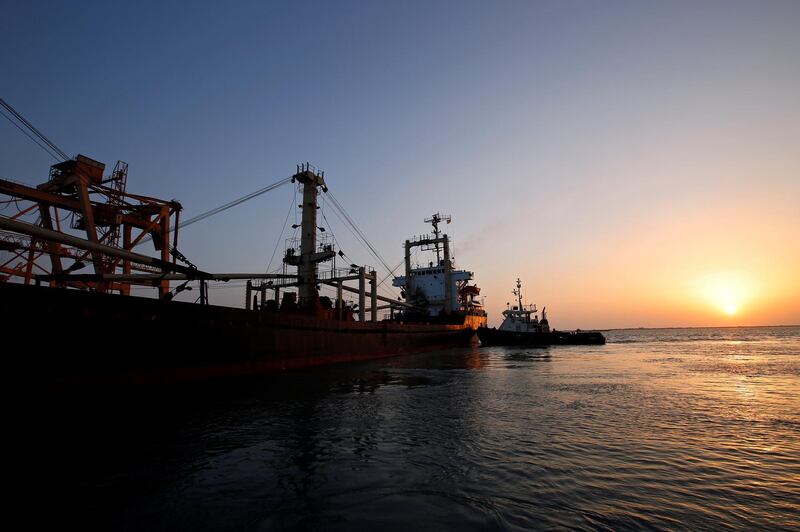Yemeni pro-government forces captured two more districts in Hodeidah province over the weekend as they close in on a key port through which the Houthi rebels control the bulk of humanitarian shipments to the country.
The Hais and Al Tuhaita districts were captured by government troops and resistance fighters on Saturday, a spokesman for the army's 4th military zone said.
"Our forces advanced to take over two new districts of Hodeidah province and they are approaching a third district, Zabeed, which we expect to fall soon. This comes two days after liberating Al Khokha, the first district of Hodeidah to the south," Lt Mohammed Al Nakeeb told The National.
"The military forces including the Popular Resistance in the south region and Tehama region moved in two directions — the first along the coastline towards Al Tuhaita to the north of Al Khokha and the second towards Hais," Lt Al Nakeeb said.
Hais lies slightly inland and north-east of Al Khokha.
______________
Read more:
[ Yemen aid lost to corruption as US steps up humanitarian pressure ]
The volatile history of oil, gas and water production in Yemen continues
[ Yemeni forces make gains in Houthis' northern stronghold ]
______________
The spokesman did not give any figures of casualties from the fighting.
Separately, at least 26 Houthi fighters were killed in air strikes by the Saudi-led coalition in Hajjah province, which lies north of Hodeidah and borders Saudi Arabia, sources close to the rebels told Agence France-Presse.
They said the strikes targeted a rebel training camp and killed its chief, Amar Al Jarab. A warehouse where rockets were stocked was also hit.
The capture of Al Khokha on Thursday was the first major gain for pro-government forces since the collapse of the alliance between the Houthis and forces loyal to the former president Ali Abdullah Saleh, who was killed by the Iran-backed rebels on Monday.
A six-year-old girl was killed and five other people were injured when Katyusha rockets believed to have been fired by the rebels hit the area on Sunday, residents said.
Government forces backed by the Saudi-led coalition have been advancing north along Yemen's Red Sea coast in an operation launched in January. The coalition, in which the UAE plays a leading role, joined the Yemen conflict in March 2015 in support of the internationally recognised government of president Abdrabu Mansur Hadi.
The coalition has repeatedly stressed the importance of a political solution to the conflict, Sheikh Mohammed bin Zayed, Crown Prince of Abu Dhabi and Deputy Supreme Commander of the UAE Armed Forces, said on Saturday.
“However, this will not be at the expense of the security and stability of the region, and it won’t be at the expense of allowing militias to work outside the scope of the nation, something that directly threatens the security and peace of Saudi Arabia and the region,” Sheikh Mohammed said during a meeting with the Washington Institute for Near East Policy.
"The UAE and Saudi Arabia have worked and are still working on easing the suffering of the Yemeni people, and they have offered humanitarian assistance to the Yemeni regions liberated from the terrorist organisations, and have opened land, sea and air paths for aid to enter the cities under the control of the terrorist armed groups,” the Crown Prince said in remarks reported by the state news agency Wam.
The fighting in Yemen has killed 10,000 people so far and displaced 3 million. The UN estimates that nearly 19 million Yemenis are in need of humanitarian aid and more than 7 million are on the verge of famine in what it calls the owrld's worst humanitarian crisis.





